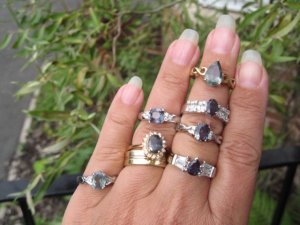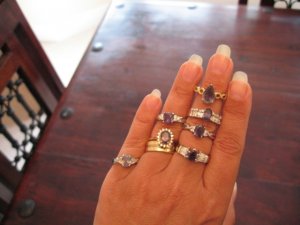- Joined
- Apr 22, 2004
- Messages
- 38,363
minousbijoux|1402081927|3688008 said:So Chrono when you say "incandescent light" does that mean that strong kitchen lights or halogen lights would work?
needfullshinythings|1402169821|3688543 said:I have an appraisal done by " Safeguard " who are an independent company attached to the Birmingham assay office UK which was done when the stone was still in its setting, the 2nd was done by registered gemologist working in the same jewellery quarter in Birmingham UK. FGA, DGA registered. ( if that means anything ) the stone was loose when he looked at it. The safeguard appraisal was very vague but states Alexandrite with a moderate colour change. When I had the stone removed from its setting I allowed my jeweller ( who isn't familiar with Alexandrite ) to send it off to the gemologist company he uses for his business. His opinion was that the stone is a " natural Sapphire " Which as you can imagine blew my mind !!! I contacted Safeguard regarding the appraisal and the dialogue didn't go too well unfortunately. It failed to mention colour/clarity/cut and no written confirmation of synthetic or natural, I have an e-mail from them that says " if there is no mention of synthetic or natural, then the stone is assumed natural " Give me 20mins and I will dig it out for you.






needfullshinythings|1402961621|3694559 said:I am sorry if my use of the word " sparkle " is misleading, it sounded right when I typed itOK lets try again When sunlight hits the stone it bounces green flashes back as you tilt it, indoors this changes to a violet colour flash. Does that sound better to you ( still struggling for the right words ) Obviously not the same as a diamond, but to me as a layman it was very unusual. The safeguard " safemark " was applied without my request or permission which is also part of my disappointment with that side of the company. They damaged my property and refused to accept this fact. Your probably wondering if I have any more bizarre episodes to add to this story, well lets wait till the stone comes back before I answer that 1


